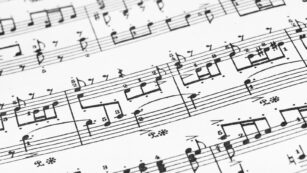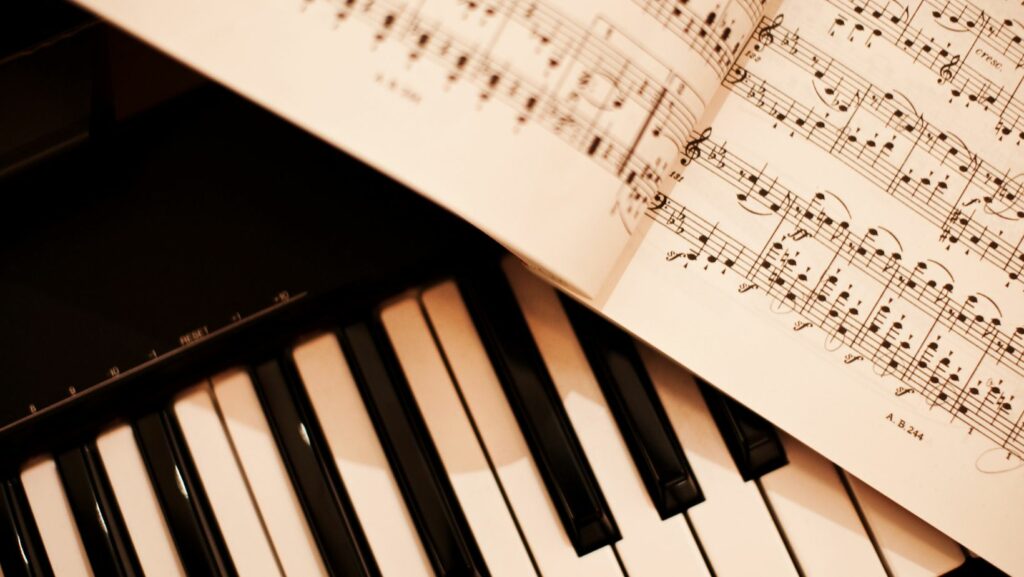Dive into the magical world of music with the classic What a Wonderful World piano sheet music. This timeless piece, first performed by the legendary Louis Armstrong, has been a staple in the music world for over half a century. It’s not just a song, but a testament to the beauty of our world, masterfully expressed through the language of music.
What a Wonderful World Piano Sheet Music
Invigorating and timeless, What a Wonderful World piano sheet music unfolds a world of melodic wonder. Interpreting this ethereal musical masterpiece, especially on a keyboard, defines a journey, a voyage of emotions and profound joy.
Historical Background of the Song
Emerging in 1967, What a Wonderful World, scripted by Bob Thiele and George David Weiss, found its voice in the soulful tunes of the legendary Louis Armstrong. Despite the initial slow chart performance in the United States, it won hearts internationally, especially in the UK, capturing the top spot on the chart. It served as a beacon of hope during the Vietnam War’s turbulent times, painting the world with a palette of optimism, serenity, and unity. Moreover, the song’s universal popularity skyrocketed after its inclusion in the 1987 film, Good Morning, Vietnam.
Popularity in Piano Arrangements
 The magic of What a Wonderful World spawned piano sheet music that continues to charm pianists globally. Captivating the essential spirit of the melody, the piano rendition garnered popularity, becoming a favorite among both budding and seasoned pianists.
The magic of What a Wonderful World spawned piano sheet music that continues to charm pianists globally. Captivating the essential spirit of the melody, the piano rendition garnered popularity, becoming a favorite among both budding and seasoned pianists.
Learning the What a Wonderful World piano sheet music equates to exploring Armstrong’s melodious portrayal of the world’s beauty. Its popularity in piano arrangements owes to its mellow tune and easy-to-follow notes that evoke a sense of tranquility. These characteristics make it a perfect learning piece for beginners, who get to explore the intricacies of a classic tune. Moreover, experienced pianists treasure it for its ability to encapsulate the world’s beauty in a poignant aria. So, it’s clear. Digging into “What a Wonderful World” piano sheet music isn’t merely about performing notes—it’s about experiencing a timeless musical journey.
Analyzing Different Arrangements
The world of ‘What a Wonderful World’ piano sheet music is vast and varies in technique and interpretation based on the pianist’s skill level.
Beginner-Friendly Versions
Consider the beginner-friendly versions of What a Wonderful World piano sheet music. These entail arrangements that concentrate on the basic melody and accompaniment. Structuring predominantly around the first few octaves on the keyboard, such versions prevail as the ideal starters for novice pianists eager to learn. Bypassing intricate harmonies or complex rhythms, the emphasis is on linear note sequences, facilitating ease in comprehension and execution, similar to playing a delightful children’s song.
Advanced Arrangements for Experienced Pianists
 Moving over to the advanced arrangements, these renditions of ‘What a Wonderful World’ piano sheet music demand a certain degree of skill and musical awareness from the pianist. The notation incorporates chord progressions and ornamentations that enlivens the piece, creating vibrant musical landscapes that are simultaneously compelling and challenging. In these arrangements, the pianist is tasked to portray the emotion and lyrical beauty of the song, expanding the musical canvas with rich harmonies. Consequently, the listener is left enchanted, reaching into the profundity that this timeless song has to offer.
Moving over to the advanced arrangements, these renditions of ‘What a Wonderful World’ piano sheet music demand a certain degree of skill and musical awareness from the pianist. The notation incorporates chord progressions and ornamentations that enlivens the piece, creating vibrant musical landscapes that are simultaneously compelling and challenging. In these arrangements, the pianist is tasked to portray the emotion and lyrical beauty of the song, expanding the musical canvas with rich harmonies. Consequently, the listener is left enchanted, reaching into the profundity that this timeless song has to offer.
Remember, whether it’s a beginner-friendly or advanced arrangement, playing What a Wonderful World on the piano transcends music reading.
Performance Tips for What a Wonderful World
 Mastering What a Wonderful World piano sheet music demands both technical proficiency and emotional connectivity. The pianist needs to accurately interpret the sheet music, while also conveying the song’s hopeful message. In mastering the technical aspects, pianists can focus on their fingering technique, ensuring that they use the right digits to play each note, allowing for smooth transitions between chords.
Mastering What a Wonderful World piano sheet music demands both technical proficiency and emotional connectivity. The pianist needs to accurately interpret the sheet music, while also conveying the song’s hopeful message. In mastering the technical aspects, pianists can focus on their fingering technique, ensuring that they use the right digits to play each note, allowing for smooth transitions between chords.
To improve the emotional depth, pianists might consider studying the original recording by Louis Armstrong, absorbing the artist’s interpretation and bringing that feeling into their own rendition. To enhance the song’s lyrical beauty, special attention should be given to the melody line, as it carries the central theme of the piece. This includes adding personal touch through subtle variations in dynamics, articulation, and tempo.



